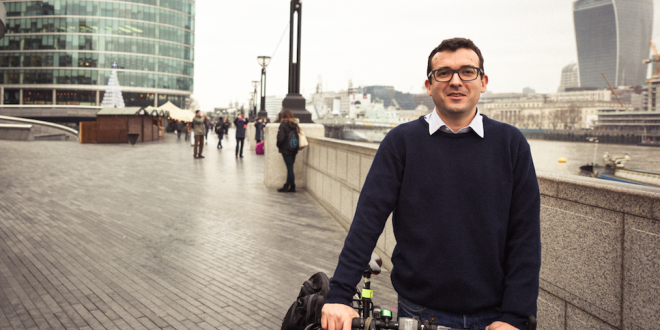As the UK lockdown heads into its second phase, Mayor of London’s walking and cycling commissioner Will Norman outlines how London could adapt to enable socially-distanced travel…
With London’s public transport capacity potentially running at a fifth of pre-crisis levels, up to eight million journeys a day will need to be made by other means. If people switch only a fraction of these journeys to cars, London will grind to a halt. Essential deliveries and emergency services will be stuck in gridlock and Londoners will once again be exposed to toxic traffic fumes and rising levels of road danger. Our city’s economic recovery will be choked off.
We need to come out of this crisis in a radically different way. At City Hall and TfL we are working on a radical solution – the Mayor’s Streetspace Plan, which will fast track the transformation of London’s streets to enable millions more people to safely walk and cycle as part of their daily journeys. These changes, unparalleled in a city London’s size, will be designed to serve the unprecedented levels of walking and cycling that we expect to see following the end of the lockdown. Some early modelling by TfL has revealed there could be a more than ten-fold increase in kilometres cycled, and up to five times the amount of walking, compared to pre-COVID levels if demand returns.
We’re already seeing the first set of emergency changes being made across London, with pavements being widened in Lambeth, a shopping street closed to cars in Hackney and residential streets being made access-only in Croydon. The Mayor’s Streetspace plan will build on this, transforming London’s main roads, repurposing general traffic lanes and parking spaces for temporary cycle lanes and wider footways so that people can safely socially distance. We will quickly roll out a strategic cycling network using temporary materials, building new routes to reduce crowding on underground and train lines. Traffic lights are being altered to reduce the time Londoners must wait to cross. Some roads may be restricted to bus lanes and bikes only at certain times of the day. More space will be given to pedestrians to reduce crowding at busy transport interchanges. These measures are intended to reduce the likelihood of danger to the public from a risk of exposure to the virus whilst travelling.
Our travel patterns, as well as where and when many of us work, will have to change. Many people will continue to work from home for many months to come. We’re likely to have fewer longer journeys to work and more shorter journeys in our local neighbourhoods. We will rapidly transform local town centres on the TfL road network to enable these local journeys to be safely walked and cycled where possible, and work with the boroughs to make similar changes on their streets. Wider footways on high streets will facilitate a local economic recovery, with people having space to queue for shops as well as enough space for others to safely walk past while socially distancing. We will work with boroughs to reduce through traffic on residential streets, creating low-traffic neighbourhoods right across London to further enable more people to walk and cycle as part of their daily routine, as we have seen happen during lockdown.
London’s road to recovery cannot be clogged with cars. It has to be one that Londoners can walk and cycle down as part of our city’s greener, cleaner, healthier future.
 BikeBiz Bicycle and cycling retail news
BikeBiz Bicycle and cycling retail news




